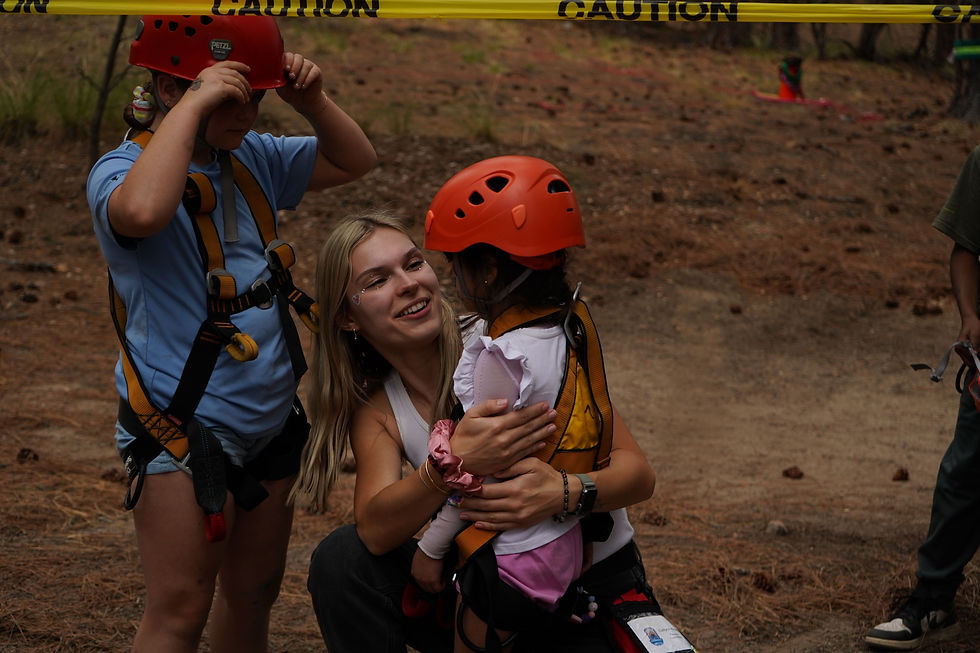Brighter Bites Brings Fresh Food and Insights To Schools That Need It Most
- Doyal D'angelo Bolin
- Jul 6
- 4 min read
Updated: Jul 31
By Doyal D'Angelo Bolin
When a kindergartner walks into distribution day at Heatherbrae Elementary School snacking on raw cauliflower, the impact of Brighter Bites becomes instantly visible. Nicole Jobson, senior program manager at Brighter Bites, is still amazed at the transformation she sees among students who start to change their eating habits.
"His mom came in and said, 'He loves it now, it's his thing,'" Jobson said.
This simple moment exemplifies the organization's mission of creating communities of health through fresh food. The organization’s mission addresses a critical need in Arizona, one beneficiary being Starlight Park Elementary School in Phoenix.
Principal Susana Huntley understands the significance of this program, especially in the valley.
"We are in a food desert. Normally we see kids eating chips and bad stuff. When we introduced Brighter Bites to our families, we had such an incredible response because families now have access to fresh fruits and vegetables," Huntley said.
The program helps address troubling health trends across the nation. "In our country, we have the highest rate of obesity and diabetes amongst children of any other country in the world," Jobson said. At Starlight Park, Huntley expresses concern about students who "choose not to eat at school, and how that impacts their learning and brain development."
Currently operating in eight Phoenix-area schools after expanding from six the previous year, Brighter Bites delivers a minimum of 20 pounds of fresh produce to participating families every two weeks. The program also provides comprehensive nutrition education for students and practical cooking demonstrations for parents.
With support from the Burton Family Foundation, Brighter Bites continues its expansion across Phoenix. This funding covers essential program elements from distribution bags to curriculum materials and volunteer support.

The approach starts but doesn’t end with providing fresh produce. It creates meaningful connections between healthy foods and cultural traditions.
"Since we started this program, scholars are learning a lot more about nutrition and how to keep themselves healthy," Huntley says. "I hear kids talking more about healthy choices when they're at home. It's raised awareness about proper eating and what's good for your body."
This education component uses the evidence-based CATCH (Coordinated Approach to Child Health) curriculum, delivered by teachers and supplemented by Brighter Bites staff. Lessons help students identify different types of foods and understand their effects on the body.
The program particularly resonates in communities where nearly half the students are English language learners. Jobson, who is bilingual and biliterate, conducts demonstrations and cooking sessions in both English and Spanish.
"Having her explain the benefits in both languages has been really awesome for us," Huntley said. "Forty-four percent of my school students are English language learners."
Brighter Bites meets families where they are, helping them incorporate unfamiliar produce into their cultural traditions. Jobson recalled a conversation she had with a mother about zucchini being in the squash family, and this is an illustration of how simple food education spurns from exposure. “It creates conversation and discussion around that particular produce item and how they can cook it and relate it to their family,” Jobson said.
These conversations extend beyond the moments of distribution. At Starlight Park, parents organize cooking sessions after each produce delivery.
"I have parents who are pretty shy come into their personality through food," Huntley said. "They cook together. They discuss recipes. A lot of what they do is based on whatever fruits or vegetables they receive."
With the community flourishing on healthy habits, the administration of Starlight also finds ways to keep students engaged. Students now have classroom herb gardens, and the library stocks books about fruits and vegetables that children actively seek out. "Our kids actually select books about fruits and vegetables," Huntley said. "They want to learn more."
Through Brighter Bites, students learn about nutrition and healthy eating patterns through a framework called "Go, Slow, Whoa" that helps them categorize foods without creating negative associations.
"We never say no to any foods," Jobson said. "We just say, 'Whoa, let's think about this.'"
The program's effectiveness depends on consistent participation. Jobson found that families who interact with the program at least ten times are more likely to experience behavioral changes.
To encourage participation, Brighter Bites gets creative, setting up tables during parent-teacher conferences where students and parents can sample nutritious smoothies.
Brighter Bites runs on a 3 year cycle, which Huntley expresses her desire for an addition to. But the three-year program cycle at each school seems to create urgency among families.
"I have parents that are really worried that this is going to be an opportunity that goes away," Huntley said. "They are benefiting so much from it."
Despite the program eventually having to run its course and spread its wings to other schools, her commitment to nutrition won't end when Brighter Bites leaves. "Since we have seen the impact it has, we'll do something to supplement it once we no longer have access to this program."
For Huntley, the value is clear. "Brighter Bites should be in every school community. It's that beneficial for scholars and families,” Huntley said.
Learn more about Brighter Bites Phoenix at www.brighterbites.org/location/phoenix
Photos courtesy of Brighter Bites.



